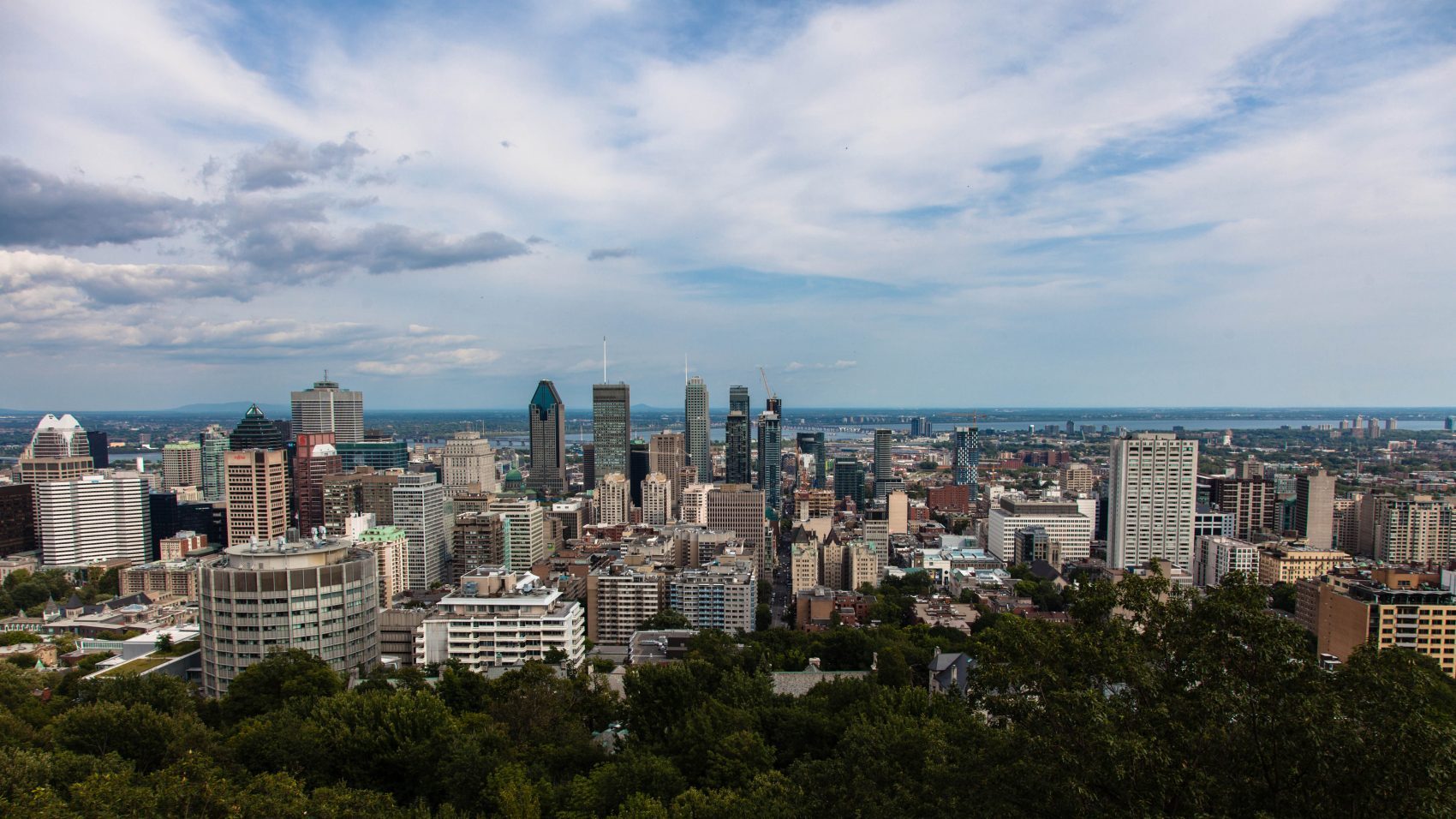Mount Royal Park: A natural and cultural oasis in the heart of Montreal

In 1535, when the Aboriginal people led Jacques Cartier to the summit of the mountain overlooking their village, he was so impressed that he named it “Mont Royal.” For many years, it was somewhat removed from the city that was developing near the St. Lawrence River. With the population explosion in the 19th century, however, the urban fabric reached the foot of the mountain, and the city acquired part of it to create a park. It commissioned landscape architect Frederick Law Olmsted, the man who designed New York’s Central Park. Several times, the public has mobilized to save portions of this vast two-square-kilometre park, in particular Les Amis de la montagne, who have been promoting the park since 1986. In 2005, the Quebec government guaranteed the park’s protection by designating it a heritage site. On average, four million people visit the park each year to participate in outdoor and cultural activities and take advantage of the lookouts that offer an unparalleled view of Montreal.
For more information…
A park loved by Montrealers and tourists alike
Its millions of users shows just how much Mount Royal Park resonates with Montrealers and tourists. One of the largest urban parks in Canada, it contains forests made up of some 60 species of trees and more than 250 plant species, which some 20 species of mammals and almost 200 species of birds call home. Nature lovers and sports enthusiasts visit the park year round to practise their favourite activities: hiking, cycling, snowshoeing, cross-country skiing, ice skating, sliding and rowing across Beaver Lake. In addition to nighttime snowshoeing, there is the Tuques Bleues Benefit Event, featuring a snowshoe race or walk up the mountain from the foot to the summit, inspired by a tradition dating back to the 19th century. The Kondiaronk, Camillien-Houde and Summit Park lookouts offer spectacular views of downtown Montreal.
Culture and heritage of Mount Royal
The D’un sommet à l’autre discovery walk organized by Les Amis de la montagne presents the history of the mountain and the city’s builders along a trail that extends from the Kondiaronk outlook to the Place Ville-Marie Observatory, through the park and a neighbourhood rich in built and memorial heritage. The Musée des Hospitalières de l’Hôtel-Dieu de Montréal also offers a walking tour highlighting the history of the mountain, Mount Royal Park and the citizens who took over the area. The historic Smith House, built in 1858, houses the Amis de la montagne’s exhibition on the heritage of the mountain, its flora and fauna and its place in Montrealers’ collective imagination. During the summer, Les Amis de la montagne also organize a series of musical Sundays, free concerts in the Mount Royal Chalet. In a completely different style, the Mount Royal Tam-Tams take place every Sunday during the summer at the foot of the George-Étienne Cartier Monument. This activity, which brings together people who enjoy percussion music, improv and picnics, came to life spontaneously in the late 1970s and continues to this day.
History of a huge urban park
When Maisonneuve founded Ville-Marie in 1642, the Aboriginal peoples that Cartier met on the island of Montreal a century earlier were all gone. In the winter of that year, the fort Maisonneuve built on the shores of the St. Lawrence River was threatened by flooding. Maisonneuve implored the Virgin Mary to save his small group of French settlers and, when she answered his prayer, he planted a cross on the summit of Mount Royal to thank her. In 1924, the Société Saint-Jean-Baptiste erected the illuminated 30-metre-high cross that stands there today in memory of Maisonneuve’s gesture.
In 1880, as Montreal became more industrialized and its population grew to 300,000, wealthy Montrealers began building opulent homes on the slopes of Mount Royal. At the same time, Hôtel-Dieu, McGill University and the Grand Séminaire de Montréal also appeared at the foot of the mountain. Montrealers concerned about the fate of their green oasis mobilized to demand that the City create a park. The City acquiesced, and invested a million dollars to purchase a number of private lots, then hired landscape architect Frederick Law Olmsted, who also designed New York’s Central Park. Olmsted was aware of the impact of industrialization on urban populations, and wanted to make green spaces, normally reserved for the wealthy at the time, accessible to everyone. When the park was officially opened in May 1876, the thousands of Montrealers who happily gathered to picnic on the mountain confirmed Olmsted’s vision: the people need clean air and time in nature.
Mount Royal’s history was marked by several citizen movements opposing projects threatening its integrity. Although the Royal Victoria Hospital, Saint-Joseph’s Oratory and the Université de Montréal were built around the mountain, and the Camillien-Houde vehicular road was built over it in 1958, several other, more invasive projects were rejected. In 1986, the creation of Les Amis de la montagne marked a turning point in the mountain’s history. This unifying organization consolidated the defence and promotion of Mount Royal Park. In the early 1990s, after large-scale consultations, the City of Montreal adopted a plan for the protection and promotion of Mount Royal. In 2005, the Quebec government granted it protected status under the law. Mount Royal Park, a gem of Montreal’s natural and cultural heritage, is currently being considered for UNESCO World Heritage Site status in the “natural heritage” category.





